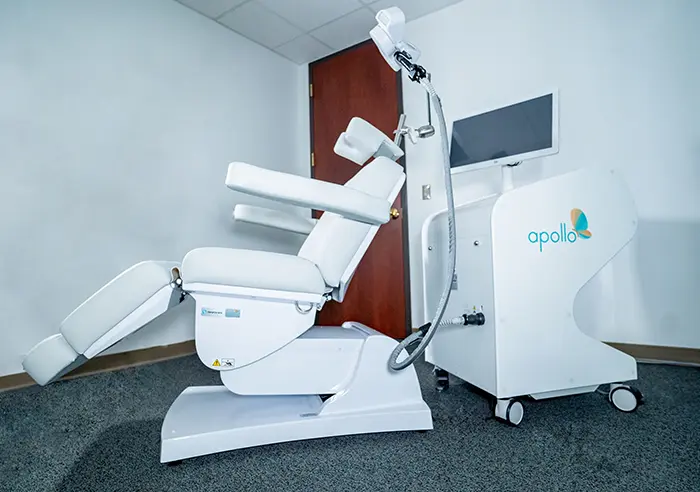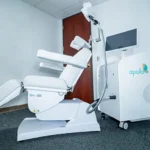
How Long Does TMS Therapy Last?
How Long Does TMS Therapy Last?
In the evolving world of mental health treatment, Transcranial Magnetic Stimulation (TMS) has emerged as a breakthrough therapy, especially for individuals who haven’t found relief from traditional medications. If you’re considering this modern solution, one burning question is likely on your mind: how long does TMS therapy last?
Whether you’re looking for TMS Therapy in Palm Springs or simply exploring options beyond antidepressants, this guide will give you a detailed, easy-to-understand overview of how long TMS takes, how long the results last, and how to make the most of your treatment.
Understanding TMS Therapy
TMS therapy is an FDA-approved, non-invasive procedure that uses magnetic fields to stimulate nerve cells in the brain. It’s most commonly used to treat Major Depressive Disorder (MDD), especially in people who haven’t responded well to medication or therapy. TMS has also been explored for conditions like anxiety, OCD, PTSD, and chronic pain.
During a TMS session, a magnetic coil is placed against your scalp, delivering pulses to specific parts of the brain involved in mood regulation. Unlike medications, TMS doesn’t enter your bloodstream and usually doesn’t cause systemic side effects.
How long does a TMS Therapy Session last?
Individual TMS therapy sessions typically last between 20 to 40 minutes, depending on the machine and protocol being used. Here’s a breakdown:
- Initial Session: Usually takes longer (45–60 minutes) because the provider must map your brain and find the right stimulation location and intensity.
- Ongoing Sessions: Most daily sessions are shorter, averaging 20–30 minutes.
You’re usually awake and alert throughout the session. There’s no need for sedation or recovery time, and most people resume normal activities immediately afterward.
Total Treatment Duration: What to Expect
TMS is not a one-time treatment. It works through consistent stimulation over some time to help rewire the brain.
- Standard course length: 4 to 6 weeks
- Session frequency: 5 times a week (Monday to Friday)
- Total sessions: Around 30 to 36
Each pulse of magnetic energy delivered during the session gently “nudges” your brain’s neural circuits back into balance, and over time, this can dramatically improve mood, energy, focus, and overall well-being.
When do You Start Feeling Better?
Many patients start feeling subtle changes after 2 to 3 weeks of daily treatment. These changes might include:
- Better sleep
- Improved mood and motivation
- Reduced feelings of hopelessness
- Increased ability to focus
Keep in mind, every brain is different. Some people may experience faster changes, while others might take longer to notice improvements. It’s a cumulative process, not a quick fix—but it works.
Factors that Influence TMS Results
1. Severity and Type of Condition
TMS is most effective in people with moderate to severe treatment-resistant depression. People with other mental health conditions, like OCD or anxiety, may have different timelines.
2. Commitment to the Full Course
Completing the full series of 30–36 sessions significantly improves the chances of long-lasting results. Incomplete treatments may reduce the therapy’s effectiveness.
3. Maintenance Care
People who combine TMS with therapy, lifestyle changes, or medication tend to maintain results longer.
4. Overall Mental Health
TMS is not a cure but a tool. The brain remains sensitive to stress, trauma, and sleep issues, so mental health maintenance is crucial.
Tips to Extend the Results of TMS Therapy
If you want to make the most of your TMS results, follow these strategies:
- Stay Consistent With Therapy: Combine TMS with cognitive-behavioral therapy (CBT) or other talk therapy approaches.
- Practice Good Sleep Hygiene: Poor sleep can negatively affect mental health.
- Avoid Alcohol and Substance Use: These can interfere with brain function and increase the risk of relapse.
- Eat a Balanced Diet and Exercise Regularly: Physical well-being strongly influences emotional resilience.
- Keep Follow-Up Appointments: Regular check-ins with your provider help manage early signs of recurrence.
What happens after TMS Therapy?
Finishing a TMS course is just the beginning of a renewed life. Here’s what the post-treatment phase looks like:
- Progress reviews with your provider
- Mental health check-ins
- Referrals to therapy or lifestyle coaching
- Strategies to reduce relapse risk
Most patients describe life after TMS as clearer, calmer, and more emotionally stable. Many even reduce or eliminate their dependence on antidepressants.
Conclusion
TMS therapy is an effective, well-tolerated, and promising treatment for depression and other conditions. So, how long does TMS therapy last? While each individual’s journey is unique, many experience months or even years of relief after a full treatment course. With proper care, lifestyle adjustments, and occasional maintenance sessions, the effects can be long-lasting.
If you’re considering TMS Therapy in Palm Springs, it’s a great time to consult a specialist and explore this life-changing treatment. TMS offers a brighter, drug-free path to better mental health—and for many, it’s just the beginning of lasting recovery.
Frequently Asked Questions
1. How long do the effects of TMS therapy last after treatment ends?
The results of TMS therapy typically last 6 to 12 months, and in many cases, even longer. Some individuals achieve long-term remission, while others may need occasional booster sessions to maintain symptom relief.
2. Will I need maintenance or booster sessions after completing TMS therapy?
Not everyone needs boosters, but if symptoms begin to return, maintenance sessions—often just a few—can help reinforce the benefits. Your provider will guide you based on your progress and symptoms.
3. Can TMS therapy be repeated safely in the future?
Yes, TMS therapy can be repeated safely without long-term risks. If symptoms recur months or years later, many patients undergo another course and experience similar or even better results.
4. Does completing all TMS sessions improve the chances of long-lasting results?
Absolutely. Completing the full course (30–36 sessions) significantly increases the chances of long-term relief. Skipping sessions or stopping early may reduce effectiveness and shorten the duration of results.
5. How can I make the benefits of TMS therapy last longer?
You can extend the positive effects by maintaining a healthy lifestyle—getting good sleep, eating well, exercising, avoiding alcohol or drugs, and continuing with therapy or counseling as needed.



